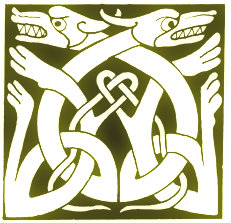
The last Celtic Feast day of the year is Lughnasa, the harvest festival named after the Celtic God Lugh. God of the sun, light and harvests, Lugh was a great warrior. According to the Ulster Cycle he fathered the legendary Cú Chulainn and is linked to a number of sites in Ireland. Lugh spent part of his childhood in the Isle of Man where he was trained by Manannán mac Lir, said to be first ruler of the Isle of Man. Legend has it that Lir fostered and trained Lugh on Man before Lugh was sent back to Ireland. Lugh is always portrayed as youthful, handsome and athletic.
Traditionally celebrated on the first of August, Lughnasa is the fourth and last of the Feast days of the Celtic year. The three Celtic Feast days preceding Lughnasa include the Celtic New Year of Samhain (Halloween) on November 1st, Imbolg on February 1st which has become the Feast Day of St. Brigid but was originally the day of devotion to the Celtic Goddess of the same name and Beltane celebrated on 1st of May. Beltane is viewed by most scholars as being unique amongst the Celtic feast days in that Beltane observances have survived in essentially archaic form in to modern times due in part to its simplicity in that the celebrations historically included the lighting of bonfires.
Lughnasa is the least known of the four feast days and is described by James MacKillop in his “Dictionary of Celtic Mythology" as follows:
Lughnasa may be the least perceptible in the industrial, secular society, but we know more about its ancient roots than any of the other three. The significance of Lughnasa began to fade and the date on which the shadows of the ancient harvest festival was celebrated began to be moved to suit its connection with modern, often Christian, celebrations observed at about the same time of year. The Christian Church did not oppose the continuation of the festival marking the beginning of the harvest…..but the different names applied to it obscured its pagan origin.